Human
Intelligence; Future Learning and Educational Innovation John Senior & Éva Gyarmathy
Visit to download the full and correct content document: https://ebookmass.com/product/ai-and-developing-human-intelligence-future-learningand-educational-innovation-john-senior-eva-gyarmathy/
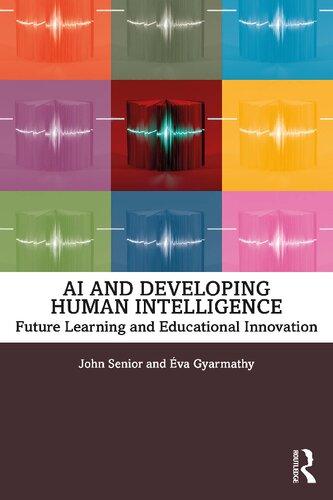
More products digital (pdf, epub, mobi) instant download maybe you interests ...
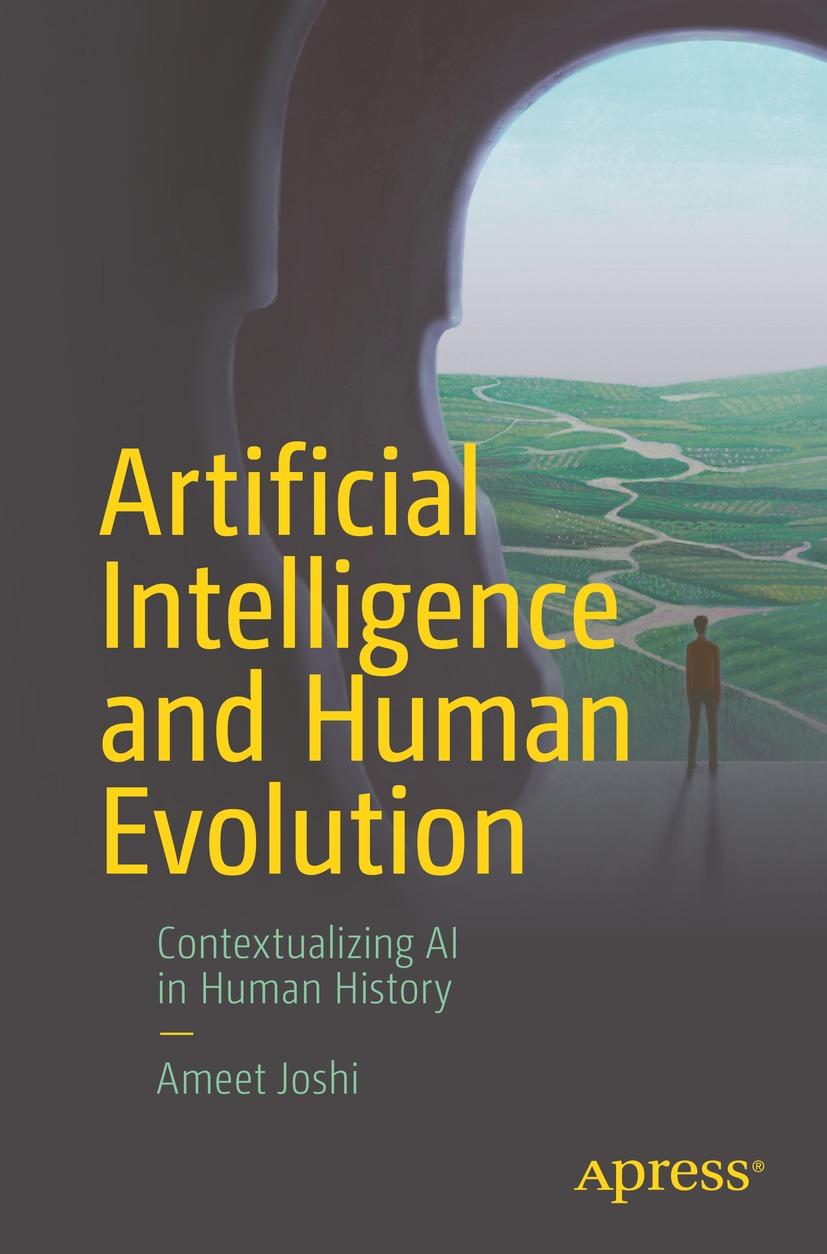
Artificial Intelligence and Human Evolution: Contextualizing AI in Human History 1st Edition Ameet
Joshi
https://ebookmass.com/product/artificial-intelligence-and-humanevolution-contextualizing-ai-in-human-history-1st-edition-ameetjoshi-2/

Artificial Intelligence and Human Evolution: Contextualizing AI in Human History 1st Edition Ameet
Joshi
https://ebookmass.com/product/artificial-intelligence-and-humanevolution-contextualizing-ai-in-human-history-1st-edition-ameetjoshi/
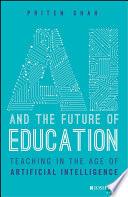
AI and the Future of Education: Teaching in the Age of Artificial Intelligence Priten Shah
https://ebookmass.com/product/ai-and-the-future-of-educationteaching-in-the-age-of-artificial-intelligence-priten-shah/
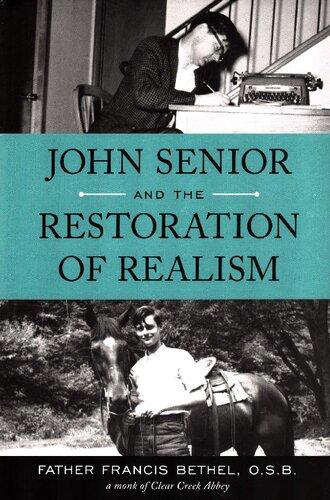
John Senior and the Restoration of Realism R. Scott
Moreland
https://ebookmass.com/product/john-senior-and-the-restoration-ofrealism-r-scott-moreland/

(eBook PDF) Educational Psychology for Learning and Teaching, 6th Edition
https://ebookmass.com/product/ebook-pdf-educational-psychologyfor-learning-and-teaching-6th-edition/
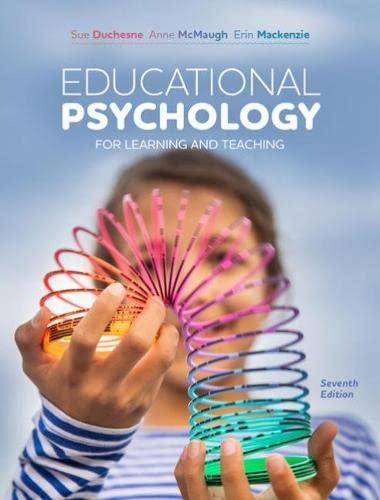
Educational Psychology for Learning and Teaching 7th Edition Sue Duchesne
https://ebookmass.com/product/educational-psychology-forlearning-and-teaching-7th-edition-sue-duchesne/
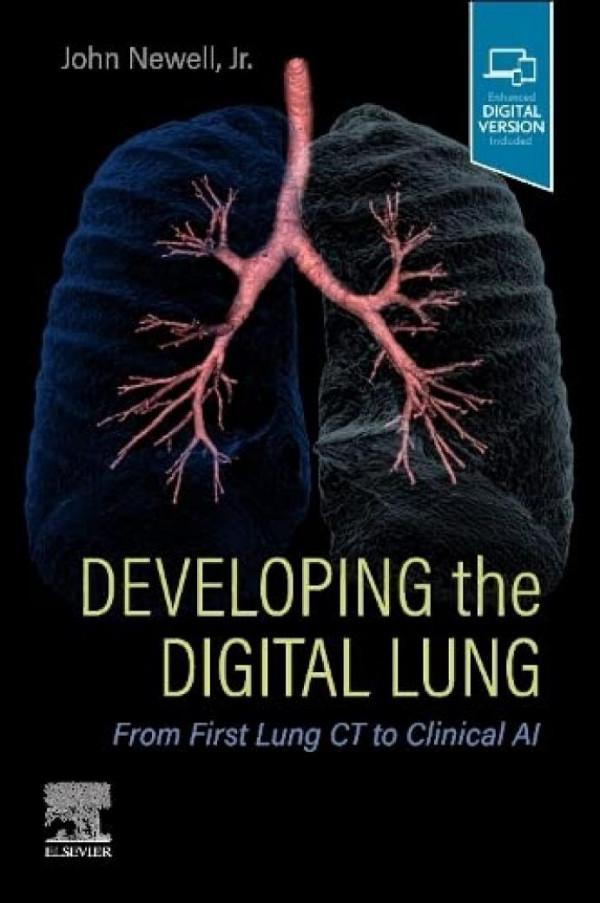
Developing the Digital Lung: From First Lung CT to Clinical AI John D. Newell
https://ebookmass.com/product/developing-the-digital-lung-fromfirst-lung-ct-to-clinical-ai-john-d-newell/
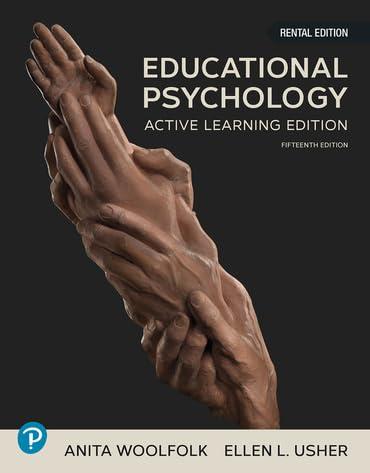
Educational Psychology: Active Learning Edition, 15th Edition Anita Woolfolk
https://ebookmass.com/product/educational-psychology-activelearning-edition-15th-edition-anita-woolfolk/
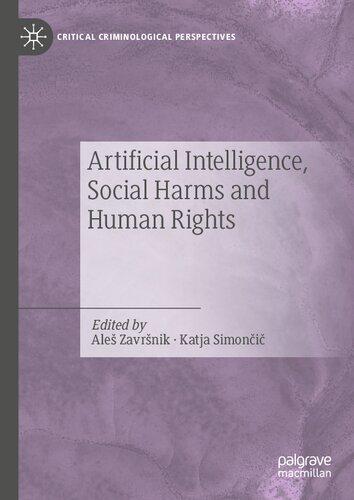
Artificial Intelligence, Social Harms and Human Rights Aleš Završnik
https://ebookmass.com/product/artificial-intelligence-socialharms-and-human-rights-ales-zavrsnik/

“This book is a fascinating, thought-provoking, and resonance-creating scaffold for navigating through the complexity and ambiguity of today and the future.”
Renate Motschnig, Vice-dean of Educational Affairs, University of Vienna, Austria
“For those who are unfamiliar with AI – this is a good introduction, for those who are already familiar with AI, this is a good refresher and for those who already use AI, this will provide some helpful, useful tips for you, particularly in future use. We need to be intelligently prepared for what is to come over the next few years!”
Michael F. Shaughnessy, Professor of Education, Eastern New Mexico University Portales, New Mexico, USA
“Teachers need to be aware of the varied forms of intelligence and the acceptance that current technical change is rapid, and hence classroom practice needs to accommodate these changes. I recommend that teacher-trainers should be first to respond to this challenge!”
Belle Wallace, MEd, MPhil, FRSA
“It is obvious, right from the beginning, that the authors know what they are talking about. I highly recommend it.”
Dr. Hanna David, Psychologist & Counsellor for Gifted Students, Emerita Tel Aviv University, Israel
“A must to read for any teachers, educators and administrators. Most definitely thought-provoking but also a validation of how to create alternative possible educational futures. I will prescribe the book for the taught Masters (Curriculum Design) course.”
Dr. Gillian Eriksson, Senior Lecturer, Department of Learning Sciences and Educational Research, University of Central Florida, USA

AI AND DEVELOPING HUMAN INTELLIGENCE
As the relationship between AI machines and humans develops, we ask what it will mean to be an intelligent learner in an emerging, socio-dynamic learningscape. The need for a new global view of intelligence and education is the core discussion of this future-focussed collection of ideas, questions, and activities for learners to explore. This fascinating guide offers activities to understand what needs to be changed in our education systems and our view of intelligence. As well as exploring AI, HI, the future of learning and caring for all learners, this book addresses fundamental questions such as:
• How do we educate ourselves for an increasingly uncertain future?
• What is the purpose of intelligence?
• How can a curriculum focussing on human curiosity and creativity be created?
• Who are we and what are we becoming?
• What will we invent now that AI exists?
AI and Developing Human Intelligence will interest you, inform you, and empower your understanding of “intelligence” and where we are going on the next part of our journey in understanding what it is to be human now and tomorrow.
John Senior is a visiting researcher at the Institute for Cognitive Neuroscience and Psychology of the Hungarian Academy researching the relationship between HI and potential psychodynamic mental health issues of AI machines.
Éva Gyarmathy is a senior researcher at the Institute of Cognitive Neuroscience and Psychology of the Hungarian Academy researching the challenge of the 21st century and talents associated with specific learning difficulties, ADHD, and/ or autism.

AI AND DEVELOPING HUMAN INTELLIGENCE
Future Learning and Educational Innovation
John Senior and Éva Gyarmathy
First published 2022 by Routledge
2 Park Square, Milton Park, Abingdon, Oxon OX14 4RN and by Routledge
605 Third Avenue, New York, NY 10158
Routledge is an imprint of the Taylor & Francis Group, an informa business © 2022 John Senior and Éva Gyarmathy
The right of John Senior and Éva Gyarmathy to be identified as authors of this work has been asserted by them in accordance with sections 77 and 78 of the Copyright, Designs and Patents Act 1988.
All rights reserved. No part of this book may be reprinted or reproduced or utilised in any form or by any electronic, mechanical, or other means, now known or hereafter invented, including photocopying and recording, or in any information storage or retrieval system, without permission in writing from the publishers.
Trademark notice : Product or corporate names may be trademarks or registered trademarks, and are used only for identification and explanation without intent to infringe.
British Library Cataloguing-in-Publication Data
A catalogue record for this book is available from the British Library
Library of Congress Cataloging-in-Publication Data
Names: Senior, John (Educator), author. | Gyarmathy, Éva, author. Title: AI and developing human intelligence : future learning and educational innovation / John Senior and Éva Gyarmathy.
Description: Abingdon, Oxon ; New York, NY : Routledge, [2022] | Includes bibliographical references and index.
Identifiers: LCCN 2021013973 | ISBN 9780367404864 (hbk) | ISBN 9780367404888 (pbk) | ISBN 9780429356346 (ebk)
Subjects: LCSH: Intellect—Philosophy. | Learning, Psychology of. | Learning strategies—Technological innovations. | Education— Philosophy. | Machine learning—Philosophy.
Classification: LCC BF431 .S4386 2021 | DDC 153.9—dc23
LC record available at https://lccn.loc.gov/2021013973
ISBN: 978-0-367-40486-4 (hbk)
ISBN: 978-0-367-40488-8 (pbk)
ISBN: 978-0-429-35634-6 (ebk)
DOI: 10.4324/9780429356346
Typeset in Bembo by Apex CoVantage, LLC
FIGURES
0.1 and 0.2 “For you see, so many out-of-the-way things have happened lately, that Alice had begun to think that very few things indeed were really impossible” (Carroll, 2003) 1
1.1 A survival kit for the 21st century
1.2
1.3
1.4
2.1
2.2
7.1
TABLES
1.1 Activities in Bloom’s system: the pairs of cognitive levels in an individual’s development, which can also be identified in humanity’s development
7.2
ABOUT THE AUTHORS
John Senior is an active learner and teacher, creativity consultant, lecturer, and writer. For over four decades he has worked with and for young, insatiable learners as a co-learner/mentor. His current research concerns the journey to understanding the relationship between Human Intelligence and the potential psychodynamic mental health issues of AI machines. Other interests focus on the authenticity of being and practical approaches to supporting parents, carers, schools, and learners who are learning within a time of turbulence.
He is the author/co-author and sometime editor of 17 books, including joint editorship and contributor to the SAGE Handbook of Gifted Education. He has also published enrichment programmes and publications supporting home education. He is an associate language editor and senior reviewer for Gifted Education International , a SAGE Journal, and a visiting researcher at the Institute for Cognitive Neuroscience and Psychology of the Hungarian Academy.
Éva Gyarmathy is a senior researcher at the Institute for Cognitive Neuroscience and Psychology of the Hungarian Academy. Her research interests focus on multiple exceptional gifted individuals such as talent associated with specific learning difficulties, ADHD, autism, and social/cultural differences. She also lectures in several universities. As a psychotherapist, her work is directed toward the care of the profoundly gifted and multiple exceptionally talented. She is a consultant to private schools that serve gifted children and adolescents who could not be integrated into mainstream schools. She founded the Adolescent and Adult Dyslexia Centre and the Special Needs Talent Support Council.
ACKNOWLEDGEMENTS
We offer our sincere thanks to those who read, advised, read again, and commented on our ideas and writing. We are extremely fortunate to know so many people who are happy to speak truthfully. Special thanks to Zsófi Gyamarthy for her invaluable observations and helping us pull the reins in on some of our wilder thinking. Likewise, our deep thanks to Sarah Philo for her astute observations, keen eye, and keener intelligence. Thanks also to Bruce Roberts at Taylor & Francis for commissioning this book and for his thoughtful patience and support, and to Molly Selby (also at Taylor & Francis), who worked harder than anybody to produce this readable, organised, and forensically edited book. All thinking errors, misconfigurations, wild thoughts (and flashes of light!), or otherwise lay at our feet.
We also acknowledge a special thanks to Platyhelminth, the Flatworm, and the Stromatolites-Cyanobacteria partnership, without whom this book would not have been possible.
PREFACE
To say we live in a complex, changing, and challenging world cannot be disputed. How we manage the challenges of change is important and something we can control. Artificial intelligence (AI) and human intelligence (HI) are at the centre of successfully managing change in a positive, compassionate, ethical, and humanitarian way. This book explores some ideas to do with our understanding of what it means to be intelligent now and in a possible future. The amount of information regarding AI can be overwhelming. We hope we discuss in this book ideas that will interest you, inform you, and empower your understanding of what has led us to our present understanding of ‘intelligence’ and where we are going on the next part of our journey in understanding what it is to be human now and tomorrow. In fact, we hope we have written a guidebook for exploring AI, HI, and the future of learning and caring for all learners. A guidebook is always useful.
AI is taking over a great deal of what has previously been viewed as the human domain. As a result, the evidence that we need to change the way we view intelligence and the way we design our education system is increasingly compelling. We need to act on this evidence and use our human ingenuity to re-imagine our education system to enable us to remain the smartest intelligence on the planet.
(Luckin, 2018)
What follows is a brief guide to the historical development and changing definitions of what was and is now understood by the word and concept of “intelligence.” The discussions within this book focus on what intelligence will become in future decades. Are we ready for a quantum leap in our understanding of what it is to be an intelligent human being in an AI world leading to deep learning and a host of innovation?
AI and machine learning are also explored, as is the likelihood of machines evolving and self-developing mental health issues which will need more attention in the nearing future of autonomous-acting intelligent machines. AI thinking at its core is essentially human.
Reference
Luckin, R. 2018. Machine Learning and Human Intelligence: The Future of Education for the 21st Century. London: UCL IOE Press. ISBN: 978-1782772514.
INTRODUCTION
Artificial intelligence: the mirror we can climb through


0.1 (ON LEFT) AND FIGURE 0.2 (ON RIGHT) : “For you see, so many out-of-theway things have happened lately, that Alice had begun to think that very few things indeed were really impossible” (Carroll, 2003)
With new knowledge come new thinking and new solutions to problems we did not realise existed. With new knowledge come new challenges and definitions. The identity and influence of artificial intelligence (AI) is accelerating and will accelerate our understanding of what it is to be human and how we will need to develop if machines also start developing independently. With new knowledge come new perceptions and insights into how we learn and how we teach,
DOI: 10.4324/9780429356346-1
how we can envision the future and become active partners with AI in creating the future. Never has the future held greater challenges than the time we are living in. In the past we have had epidemics, financial collapse, religious and moral earthquakes, war and unrest, unspeakable wrongs to fight against, and the overarching problem of human ignorance. The future informed by work done today – if general purpose artificial intelligence (GPAI) becomes possible and is created – will mean there is no need to assume there would only be one solution to fit all challenges, as GPAI would be capable of enormous calculation intelligence. Already today, even recourse to only special AI can help us overcome problems and shape the future. AI does not need to repeat the mistakes of the primate, Homo sapiens.
In this book we look at what it is to be intelligent, what it means to challenge accepted views of how we should learn and teach in the world of an advancing technology that is working at speeds we can hardly manage to understand. We seek to explore and contribute to the reduction of uncertainty in the whole of society by a careful examination of how intelligence is developed and enriched through, in part, determining a holistic curriculum delivered through a holistic pedagogy.
Developing learning represented by artificial intelligence + human intelligence will maximise our intellectual, commercial, and physical survival chances as we manage and respond to the emergent developments, dangers, and challenges of AI.
The world is far from finished. There are new additions and old errors everywhere that must be considered in ever-changing pictures of the world. We are reduced to fragmentary knowledge sufficient to provide practical but partial anchorages. The study of epistemology is a prescription for humility.
(Viney and Douglas, 2017)
We must learn from our mistakes to survive and to improve our lives and the experience of being human.
Artificial intelligence offers an opportunity to see things differently, to act differently, and perhaps most importantly to frame an understanding of what it will mean to be human in a world of intelligent machines – at all times bearing in mind that GPAI may achieve an independent learning state sooner than we think.
And that is why you should read this book. It is a book of fact and fiction, nightmares and dreams, possibilities, and opportunities – it does not seek to be a scientific work or a strictly pedagogic guide. It is a book for the present and a modest guidebook for the future of learning and what it will mean to be a learner in the age of AI. Our view of intelligence is that it is going to move from the stage of the adolescent narcissist to one whereby informed and mature choices will need to be actively arrived at. These choices will be decisions that will in
turn need to be acted upon as we understand the underlying anxieties and ambitions that underpin our present concepts of what it means to be intelligent.
Artificial intelligence may even be the purpose of the human race. Who is to say? In this book we aim to promote and inform learners, teachers, and carers as to the pathways and highways we can choose as individuals within stronger communities to follow. We can follow on from the work and vision of Augusta Ada King, Countess of Lovelace, as she explored through the mindset of “poetical science.” This led her to ask questions about the “analytical engine” through which she considered how individuals and society related to technology as a collaborative tool, presciently saying that machines can only do what we have the skill to tell them to do.
Our starting point, central to this book and our views as researchers, is one step in building on the work of the many people of vision. We might at some point in our future be entering a time when intelligent machines will not need to be told anything. They will need to have discussions and to continually learn as humans do. In life we do not start from nothing.
The words of Toffler are still relevant to our present-day situation and will remain so for the foreseeable future:
When a society is struck by two or more giant waves of change, and none is yet clearly dominant, the image of the future is fractured. It becomes extremely difficult to sort out the meaning of the changes and conflicts that arise. The collision of wave fronts creates a raging ocean, full of clashing currents, eddies, and maelstroms which conceal the deeper, more important historic tides.
(Toffler, 1980)
Each chapter is laid out in a similar way. Chapters are briefly précised; then the main content of the chapter follows. In many ways this is a practical book seeking to afford informed change, and with this in mind we have included four sections to support the ideas in each chapter: sample activities/exercises and projects, link pathways (further discussion points/topics), suggested further reading, and the references pertinent to the particular chapter. The book is presented so that chapters are independent of each other while linking in order to present an overall view of our collective possible futures as we discover how to learn in a new world.
1 Defining the new learning landscape
• Information and uncertainty
• The third culture
• “Humachine” transformations
2 A brief history of intelligence
3 Fluid intelligence, other satellites, and consciousness
4 The changing nature of employment and future learning behaviours
5 Included, excluded, extraordinary, efficacious, and invisible learners: transitional and open curriculums
6 Accepting change: a brief history of the future
7 The mental health of machines
8 What needs to be done: the creative being and being creative
Should you see this book as a “serious” book? Yes. Should you see this book as a little disturbing? Certainly. Most importantly we hope you enjoy this mix of science and poetical art and find a positive return from considering our ideas and the presentation of other ideas: a book that is stimulating and a useful preparation for viewing the place we are now living in and the times we are steering our lives towards.
We are being driven by many “clashing currents” into changing our views of the past which in turn influences our view of how the future might be. The forces seeking changes are not all benign or caring of us. Understanding what is happening in our future world is essential whether we are a learner or a teacher, and we must recognise that we are both. Inaction is no choice we can make.
We hope you enjoy this book and find it useful in reflecting on our view of the past, present, and future mixed-up conceptions of AI and intelligence; what it means to be both reflecting upon and living in the present, preparing for the pedagogy of the future, and learning to live in an ever-developing human, artificial, synthetically intelligent present.
Enrichment
Questions to ask:
i How would you define intelligence?
Do you believe such a thing as a measurable intelligence exists? How would you characterise artificial intelligence as a feature of a developing world?
What is it to be human? What makes us unique? What is the use of consciousness? What is it for?
ii The periodic table, also known as the periodic table of elements, is a tabular display of the chemical elements arranged by atomic number, electron configuration, and recurring chemical properties. The organization of the periodic table can be used to derive relationships between element properties, and also to predict chemical properties and behaviours of undiscovered or newly synthesised elements. How could a periodic table of intelligences be created? What common criteria could be assigned to intelligences? How many types of intelligence could exist? If not a periodic table of intelligence, could a periodic table of ideas be created, showing what does exist and the blank spaces of ideas that should exist?
Link pathways
What connects Lewis Carroll, Countess Lovelace, Alvin Toffler, Isaac Asimov, and George Polya?
References
Carroll, Lewis. 2003. Alice’s Adventures in Wonderland and Through the Looking Glass London: Penguin Classics. Illustrated. ISBN-13: 978-0-141-43976-1.
Toffler, Alvin. 1980. The Third Way. London: William Collins Sons & Co Ltd. ISBN: 000-21184-7.
Viney, W., Woody, William Douglas. 2017. Neglected Perspectives on Science and Religion: Historical and Contemporary Relations. Abingdon, UK: Routledge. ISBN: 978-1-138-28476-0.
Suggested further reading
Alison, Gopnik, Meltzoff, Andrew, Kuhl, Patrick. 1999. How Babies Think . London: Weidenfeld & Nicholson. ISBN: 0-297-84227-7.
Lovelace, Ada King. 1992. Ada the Enchantress of Numbers: A Selection from the Letters of Lord Byron’s Daughter and Her Description of the First Computer. Mill Valley, CA: Strawberry Press. ISBN: 978-0-912-64709-8.
Macfarlane, Bruce. 2017. Freedom to Learn: The Threat to Student Academic Freedom and Why It Needs to Be Reclaimed. London: Routledge. ISBN: 978-0-415-72916-1.
Polya, George. 1945. How to Solve It. London: Pelican Books. ISBN: 0-14-012499-3.
Wooldridge, Michael. 2020. The Road to Conscious Machines: The Story of AI. London: Pelican Press. ISBN: 978-0-241-39674-2.
1 DEFINING THE NEW LEARNING LANDSCAPE
A humble guide to the new world
Information and uncertainty – the struggles of education at level 2
The digital generation is us – all of us. Generations who previously would have been labelled as digital immigrants are more similar to those called digital natives than their earlier selves. Predigital fossils have not changed, though, of course. The old adage is true in this respect, too: “The stones remain.” And there will be many who will remain strangers to the digital present and future. We always need to remember that, for many, change is difficult to accommodate, and we must take this into account as the realisation of the future accelerates.
However, those who are alive to change and learning and not made of stone have spent so much active time in the age of info-communication that their neurological systems have adopted to the ways of this age. The human spirit, on the other hand, especially in a defensive mode, does not succumb so easily to novelty, and it will vigorously resist change and the uncertainty caused by change. Many people are still waiting for a new culture to pop into existence, which would finally bring some stability again.
This new culture is in the making. This is the good news. The bad news (but each can label “good” and “bad” as they see fit) is that the core essence of this new culture is change. As such, the most important component of our psychological survival gear is the acceptance of uncertainty. It will not be easy, but, coupled with our other values necessary for survival, we are facing a huge opportunity for development.
The general direction of historical development is clear, as are the new challenges of change, and answers to these challenges. They have already appeared in accordance with a series of levels familiar from several domains of human activity. Such challenges signal a change between these levels and
inter-relationships and have invariably brought revolutionary changes in all eras and all arenas.
However, the stimuli bearing change have not yet reached the response threshold of the educational system. It has either been sedated with particularly strong tranquilisers, or the system itself is too unwieldy and requires a bigger scale of destruction in order for the mummies of education to be uncovered and put in a museum and for the pyramids to be filled with content adapted to change.
Information networks
Human information networks exist and have always existed, because the transfer of information belongs to and is enlivened through human social behaviour and has a defining impact on human development.
According to evolution scientist Robin Dunbar (2004), everything started with social grooming. On observing the social behaviour of primates, he concluded that this social cohesion activity is very demanding, and as a result, the brain is capable of handling only a limited number of social relationships. Based on the brain capacity of different species, he calculated the approximate size of their communities. In the case of humans, this number is around 150 people. Grooming such a great number of individuals would be, however, time-consuming, and so in the case of humans, the role of social grooming has been taken over by talking and gossip as a means of building social cohesion.
This helped considerably in our rise and our development.
The ancestor of the internet was a merely virtual (although we shall pass over what we mean and understand as to exactly what is real) network transferring information, and it worked well in smaller communities. Humans, however, strived to expand their communication in both space and time, and they experimented with different mediums. Smoke signals, cave drawings, then later recorded linguistic speech (pictographs, pictographic writing), phonological representations, and alphabetic writing were a big step forward in knowledge sharing.
Printing brought about a revolutionary change, and subsequently the spread of electronic communication tools and digital technologies meant that infocommunication became extremely fast and rich, bringing with it a number of social and developmental changes. Even gossip did not remain what it used to be. It developed with the technologies of the 21st century, which shows that gossip does indeed fill an important role in humanity’s life.
Gossip plays a vital community- and culture-forming role, not to mention that people are also informed of important things through gossip. Gossip used to be the news. The appearance of printing brought on an enormous change, and publicly available information came into being. Gossip became the antithesis of this.
As printing became widespread, gossip as information took on a negative connotation, because in many respects what it conveys is unreliable and inessential, and it is often used for manipulative purposes. Today, now that we have technologically surpassed printing and the internet has opened up the way for information at a hitherto unseen level, information very much resembling gossip is beginning to increasingly appear on this pinnacle of information tools: information on the internet is often unreliable, inessential, and often serves manipulative purposes. Gossip has become globalised.
With the appearance of the internet, it seemed at the beginning that human knowledge would finally expand and would be unstoppable. However, as the internet became widespread, its content slipped out from under the control of the small class of “literates.” Information generated by the users mirrors these users, and so the greater the masses that use the internet, the more its content mirrors the intellectual content of humanity.
The internet is a storehouse of the information generated by humans, rather than of humanity’s knowledge. The first step in learning to use new tools is to learn how they work and how they can be used. The second step is to understand what it is that it creates and how it creates it. We have taken the first step, even if somewhat hesitatingly, but not the second one, and we should be cautious as to the next steps we take, as it is dangerous to proceed without understanding what it is we are proceeding to.
The internet bombards us with data, information, knowledge, and wisdom, but it would be good to know which is which.
The road from information to knowledge and, hopefully, beyond
The words data, information, understanding, and knowledge are often used synonymously, even though there are vital differences between them. Russell Ackoff (1989) analysed very precisely the various elements in communication. Since then, many have been trying to develop his system, but the following captures its essence:
• Data: a description of the world in symbols; facts
• Information: processed, transferred data, knowledge, or opinion; answers “who,” “what,” “when,” and “where” questions
• Knowledge: processed, applied data and information; a model of the world; answers “how” questions
• Understanding: involves further processing; answers “why” questions
• Wisdom: evaluation of the processed material
A piece of data is about unprocessed facts. It may be mistaken, but it is never false (though it can be falsely conveyed). At that point, however, it is information and not a piece of data obtained through direct experience.
Information already represents interpretation and opinion, and of course, like data, can also be mistaken, but processing allows for conscious or unconscious deception as well.
Knowledge arises from the processing of information. Following appropriate processing, useful knowledge comes into existence. Knowledge presents a limit to the ability of answering questions. If processing remains at the level of memorisation, a more generalised application of knowledge is not possible.
Understanding is the cognitive and analytical processing of knowledge. The difference between knowledge and understanding is the same as the difference between memorisation and learning. This is a conceptual difference that the word learn actually fails to highlight sufficiently. If someone has learned something, then they are able to apply that piece of knowledge, while if they merely memorised it, then they will not be able to apply it due to lack of processing, because processing is what leads to understanding and therethrough to solutions beyond mere factual knowledge.
Computers are able to process data and create information for us. Significantly, artificial intelligence can no longer only memorise things; it is also able to learn things. This way, a machine may be able to learn more efficiently than a student who is compelled by education to stick to factual knowledge.
Wisdom is the highest level of processing and synthesis, a level at which the mind creates new connections based on knowledge and based on the evaluation and deliberation of the understanding of this knowledge. This is a creative level, a level at which elements of earlier categories are evaluated along moral and human values, as well, whereby a higher-level understanding can emerge.
The first four categories relate to the past and are concerned with what has been and what can be known or understood from what has been. The fifth category, wisdom, looks at the future, and in fact creates ideas that constitute the future. However, this level is out of reach without a command of the previous levels of processing.
Many are of the opinion that artificial intelligence is incapable of reaching this level because of its lack of conscious experience. However, if artificial intelligence develops at an exponential rate as reckoned by Ray Kurzweil (2005) and many others, then it could reach the capacity of the human brain within a few decades, and since it is able to learn, it will also acquire experience. The question is at which point we can regard this as a conscious experience.
Artificial intelligence has already crossed some boundary lines that we set with a human brain socialised in the past. One such line is creativity. Machines have been able for some time to write Bach chorales, and anyone today can create artistic pictures with basic mobile applications. Artificial intelligence can also write movie scripts and beat not only the best chess players but also Go masters,
even though this game requires a lot of intuition. Artificial intelligence is also capable of producing formulas in organic chemistry.
Technology and the propagation of information both develop exponentially –that is, their development accelerates. Information floods us, and we have to learn to process it very soon. To achieve this, it can help if we understand the general tendencies of development processes, and if learning/teaching progresses to the levels currently dictating cultural and social changes.
The ladder of development
There are several segments of our collective and individual lives whose development catalyses significant changes in human history. Such segments include technology, information dissemination, and education. Technology has primarily affected the development of humanity at the level of ecology, while dissemination of information did so at a mental level.
The role of education is to impart the most important abilities and knowledge in a given culture, and education fulfils its function when it meets the technological and information dissemination challenges of the relevant culture. We need to respond not to the tools provided by our culture but to the problems posed by our culture.
Revolutionary changes involve fundamental level shifts which entail significant changes in the socio-cultural environment, and such turning points are as a result not hard to identify.
The instrument of the information explosion at the end of the 20th century was the internet. It developed within a very short time span and very clearly right in front of our eyes, and it has been progressing from Web 1.0 towards Web 4.0.
Each developmental stage of the internet has brought massive changes in human communication, which in itself makes the internet an important object of study. Here, however, the focus of our study is not merely the effect of the development of the internet. Instead, this quickly developing tool will be used to illustrate the stages of development through the different versions of the internet, adopting even the version designations 1.0–4.0.
The short history of the internet through its stages is as follows:
Web 0.0: 1969 – ARPANET and other internal information networks are its precursors.
Web 1.0: 1991 – The World Wide Web becomes a public network of information; information becomes publicly accessible.
Web 2.0: 2003 – Social network; interactive; human links become widespread and common; users generate data.
Web 3.0: 2006 – Intelligent network; it adapts data coming from the users to user needs; content becomes personalised.
Web 4.0: 2012 – Artificial intelligence becomes part of the network; a collaboration of machines and humans; a comprehensive organising force arises.
The different steps in the development of the internet are thus as follows:
1 Precursor, initiative
2 Appears and becomes accessible
3 Spreads and becomes widespread and mainstream
4 Becomes differentiated and personalised
5 Reaches the level of synthesis and becomes comprehensive
This trend fits all other forms of development as well, irrespective of how big a time interval the development takes up. The stages we observe through the transition stages of the internet – an important and quickly developing tool – apply equally to technology, information transfer, and education.
The cases of industrial revolutions, revolutions of the media, and the evolution of education would be entirely parallel, although in the latter case, we can hardly talk about revolutions’ more restrained evolution. But the stages do support one another:
Precursors
Industry 0.0: 13th century – Technological innovations; the use of the force of nature during the first stages of “mechanisation;” the windmill and the water mill appear.
Media 0.0: 11th to 15th century – Codex-copying monks and (later) secular copying workshops would be involved in replication.
Education 0.0: 11th to 15th century – The foundations of today’s education were laid in medieval monasteries, where even poorer children had the opportunity to study.
It becomes accessible:
Industry 1.0: end of the 18th century – The steam engine makes it possible for humanity not to rely on animal power; mechanisation becomes available.
Media 1.0: middle of the 15th century – Books need no longer be copied by hand; the printing press makes books, and so information is more accessible.
Education 1.0: middle of the 18th century – Schooling begins, and education becomes available to everyone.
It becomes widespread:
Industry 2.0: beginning of the 20th century – Mass production spreads; assembly line production.
Media 2.0: beginning of the 20th century – Massive spread of information; the radio, the printing industry, the telephone, television, and other cultural instruments make information available to the masses.
Education 2.0: beginning of the 20th century – Mass education emerges, compulsory schooling.
It becomes personal:
Industry 3.0: first decade of the 21st century – Digital solutions, production of more personalised products, nanotechnology, and 3D printing begin.
Media 3.0: first decade of the 21st century – Information belongs to everyone; personal information now also appears in the media.
Education 3.0: first decade of the 21st century – Digital solutions make personalised learning possible.
It becomes comprehensive:
Industry 4.0: 2014 – Comprehensive production; the biological, physical, and digital worlds are interconnected; intelligent products and the means of production and logistical provision communicate with each other in production (BMBF, 2014).
Media 4.0: 2020 – Comprehensive media; newspapers and TV channels are not separate anymore; information is handled by artificial intelligence.
Education 4.0: middle of the 21st century – Learning inheres in everything; students can learn anywhere; the school is electronic and mobile and is connected to artificial intelligence.
It is not hard to see that education lags significantly behind in terms of development trends. In a very few countries, personalised education that is assisted with solutions from digital technology is the norm, but in several countries, the central goal is still the mass education of version 2.0, with a single central curriculum and uniform implementation, all the while level 5.0 is soon on the horizon when it comes to the web and industry. Level 5 is pushing at the classroom door.
The consequences of this lag can be seen in the increasing lack of skilled workers at a time of considerable unemployment levels. With the development of the industry, several professions are lost, but several professions are also created. The new professions, however, require level 3.0 or even level 4.0 know-how.
Education, owing to its own lack of progress, is preparing students for a much lower level than the current level of the industry, or even the level of information processing in the media – that is, information transfer. As a result, the generations of the future continue to remain vulnerable even in an area crucially influencing human society, namely, information management.
Education at level 2.0
Education fails to find its place. It got stuck in the 20th century and is a source of failure after failure. At present, the system cannot even handle student 3.0. Certificates and waivers that document this are currently issued to children in the form of diagnoses. Such documents – issued by experts – state that the student needs to receive personalised education. As such, the recommendations in the diagnoses issued to children describe exactly what education should be implemented at a system-wide level.
At a 3.0 level, personal modalities take centre place, and diversity appears as a value. This is the most direct task in front of education.
This is the major attitude change that is necessary; the rest will follow as education is able to embrace and assimilate change. We can start by acknowledging that even teachers are diverse, and not everyone uses Facebook or has a smart phone in their pocket. And if virtuosos of info-communication, well-versed in all aspects of web 4.0, decry teachers who do not use digital technologies, they immediately prove that they are themselves stuck at level 2.0 just as much as the one who decries the children immersed in digital technologies.
The measure of an efficient teacher is engaging in teaching activities stemming from the children’s interests, rather than the use of technological tools. The latter is automatically a part of learning.
Children mirror human culture because they are socialised in the given culture. In other words, their brains are wired by culture, and so they are the ones who signal changes best. Currently, they are signalling that they are developing in diverse ways and at different paces in the stimulus environment at hand. This developing diversity is also inventing the future delivery and curriculum of future learning.
In earlier cultures, a relatively homogeneous and restricted spectrum of stimuli was the norm. The info-communication space started to open up in the 20th century, but it was still a slow business and the “media” worked in a more limited way than today: books, radio, television. Although toys and travel opportunities became widespread, the opportunities of children for autonomous, self-directed learning experiences were much more limited than today.
In the age of info-communication, the environment becomes significantly richer in stimuli. Children’s brains can pick and choose from a much greater spectrum of stimuli than before. However, it is not primarily the quantitative increase in stimuli that is responsible for the change, but the fact that children are in the position to acquire personalised and large quantities of information and knowledge independently, without the mediation of adults. As a result, their environment is automatically more individually tailored, and consequently, their abilities and affinities find the stimuli necessary for their development sooner. And in absence of guidance, they do so even at the expense of neglecting certain other areas.
The developing brains are able to independently satisfy their interests and desire for experience with information already at preschool age, while of course
potentially omitting a lot of activities that used to be commonplace, and this may lead to deficits.
As soon as humanity was freed from the constraints of information scarcity, its diversity manifested itself. A homogeneous education that only takes the average into consideration cannot be successful in such a diversifying world.
The stimulus environment, which from today’s perspective used to be very limited, channelled development in a single direction, and whatever lay outside the expectations of school and education seemed irrelevant owing to the illusion of homogeneity. Segregation, the “Taygetos,” ostensibly solved the situation.
As the stimulus environment became richer, however, differences came to light, which were identified as “heterogeneity” by the system. The problem now concerns great masses and cannot be ignored any longer. The crowd shoved to the side will form a dark mass when they grow up, and in absence of a leash this mass will break loose in a realm of wide new opportunities, and then in absence of independent thinking can be easily put on the leash of any ideology and exploited to any end.
Integration as a solution is rather mixed. It counts as an important step forward that it is now an essential goal for “heterogeneity” not to remain uncatered to. But integration is not the real solution, because the idea behind it is that we simply squeeze the individual back into the system that rejected them in the first place. A methodological reform is missing. New methods have begun to be introduced at local levels in several places, often driven by teacher ambitions, but a system-level change is lacking.
The real solution would be to ensure the conditions for inclusion. Once diversity is acknowledged and identified as a benefit, the system will not simply tolerate but value individual ways and solutions, and it can proceed to level 3.0 using personalised education.
Today, change is at a critical point where it is no longer possible to ignore what we have already acknowledged in other areas: nature favours diversity, and individual paths are of value.
Diversity is also a key issue in information management, but the most important thing is for us to understand the significance of information and information processing in an information space that has rapidly opened wide up.
Information processing and uncertainty
Now that we are so far along our journey into the information age, it is high time (in fact, maybe we’re already somewhat late) to recognise information and different ways of processing it, to understand and make others understand what is what, and what has what value.
According to the information theory of Claude Shannon (1948), the information content of a certain quantity of data depends on the extent to which it lowers uncertainty. The more probable an event, the lower its news value and the less it lowers uncertainty. An improbable event, on the other hand, has big
informational content. This is why it is more interesting news if the postman bit the dog than if the dog bit the postman.
Looking at the psychological aspect, we see that news plays a role in survival, because it informs us of some hitherto unknown danger or some hitherto unrecognised opportunity. Each new phenomenon is thus interesting to us in two respects, and we can learn from it in either way. Learning, in turn, is an instrument of our survival.
Translating this back into the domain of information, the result of a situation whose outcome is up to chance is uncertain. Once the situation is resolved, this uncertainty disappears. The original uncertainty can be measured with the amount of information we gained on the resolution of the situation.
Uncertainty is lack of information, and the reverse is also the case; that is, information results in a reduction in uncertainty. Doing the math, we get the result: people are more receptive to extreme news, because it is less probable and so the information content is bigger.
People’s attention is easily captured with sensational news, even if it is false. And in the info-communication age, any kind of news can be generated very quickly.
When we check and process a piece of news, we lower the informational value of the news because its novelty decreases: once we link it to known facts, it becomes more organised.
Weaver and Shannon introduced into information theory the concept of entropy. Entropy is a level of uncertainty which is measured by the information necessary to cancel it. In other words, entropy is missing information, and so an infinite number of possibilities means full freedom and full uncertainty. (This is why many people do not care for freedom – and excessive freedom is indeed dangerous, being a demanding chaos itself.)
The value of information is highest when there are an infinite number of choices. If the situation is highly organised, randomness is of a lesser degree; possibly there is not even any choice – in this case, the value of information and the level of entropy is low.
Translating this into problems of psychology, it is exceedingly difficult to choose between two similar things, be they good or bad. The choice will be random, because we lack information based on which to choose among the alternatives, so there is as little opportunity for conscious decision as when there are no choices. (Cf. in a dictatorship, news does not have informational value.)
The more a system is constrained by rules, the smaller the role information has, and the less chance there is to tackle new phenomena, whereby learning remains at a lower level. In an open world, however, information is incredibly important, because we have a choice; we can make decisions and we need to deliberate things, whereby our uncertainty is high, as is our opportunity to learn.
The biggest danger, however, is not when uncertainty is high, but when information is sparse and/or unprocessed. (Too much information therefore leads
